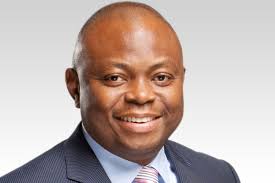Fidelity Bank Plc, one of Nigeria’s highly diversified financial institutions has announced its unaudited results for the half year ended June 30, 2016, disclosing that its deposit base grew to N829.9 billion from N769.6 billion in 2015 Financial Year (FY).
This represents a 7.8 percent increase for the period under review. Also, the Bank’s net loans rose impressively by 23.0 percent from N578.2 billion to N711.0 billion, demonstrating its unwavering commitment towards supporting critical sectors of the economy. According to the lender’s financial statement for the period under review, Fidelity posted a decline of 2.6 percent and 35.0 percent in its gross earnings and Profit before Tax (PBT) respectively.
Whereas total assets increased by 13.5 percent to N1, 397.9 billion from N1, 231.7 billion in 2015, total equity remained flat at N183.5 billion. While total expenses rose by 10 percent to N31.7 billion from N28.8 billion in H1 2015, operating income increased to N43.6 billion from N42.0 billion in the preceding year, representing a 3.6 percent rise.
Commenting on the overall result, Managing Director/Chief Executive Officer, Fidelity Bank Plc, Nnamdi Okonkwo, stated that the company’s financial performance is reflective of the general slowdown in business activities due to lower government revenues, which is a direct fallout of the free fall in international oil prices. According to him, rising inflation rate, lower disposable income and tougher operating environment for most sectors of the economy as well as the impact of the devaluation on asset quality has all together impacted financial performance.
“Despite the headwinds above, we continued with the disciplined execution of our medium term strategy and recorded decent growth on key operational metrics; deposits, loans, net interest income, electronic banking income and operating income”, Okonkwo explained. Net Interest Margin (NIM) declined from 6.9 percent (2015 FY) to 6.5 percent in H1 2016 despite a drop in its funding cost from 6.2 percent (2015FY) to 4.2 percent H1 2016.
“This was due to a 2.0 percent drop in the average yield on its earning assets driven by lower yields on liquid assets and a reduction in lending rates for some sectors of the economy which ultimately resulted in aggregate yields on earning assets declining faster than funding costs”, said the Bank Chief Executive. But more importantly, risk assets grew by 23.0 percent (N132.9 billion) from December 2015 with the 40 percent devaluation of the local currency (naira) accounting for 15.6 percent (N89.9 billion) of the Bank’s loan growth. Foreign currency loans currently constitute 43.7 percent of total loans up from 38.1 percent in Q1, 2016 due to the currency devaluation.
The organic loan growth of 7.4 percent was principally driven by on-lending facilities to the public sector. Cost of risk spiked to 1.4 percent in H1 2016 due to the N4.0bn impairment charge taken in Q2, 2016. “We have taken a very prudent view of the impact of the currency devaluation, tougher operating environment and declining consumer disposable income on selected sectors of our loan portfolio”, he said.
Though the Bank’s NPL ratio declined to 3.4 percent largely due to the growth in the loan book, Fidelity Bank has maintained a conservative approach going forward, adding that the lender revised its cost of risk guidance while focusing on keeping its NPL ratio below 5.0 percent.
“Our other regulatory ratios (Liquidity Ratio / CAR) remained above the set thresholds though capital adequacy ratio declined to 16.3 percent principally driven by the growth in our loan book and other earning assets. Our key objectives for the 2016FY remains; redesigning our systems and processes to enhance service delivery, cost optimization initiatives to reduce expenses by 5.0 percent, proactive risk management, increased customer adoption to our digital platforms and increasing our retail banking market share”, he added

